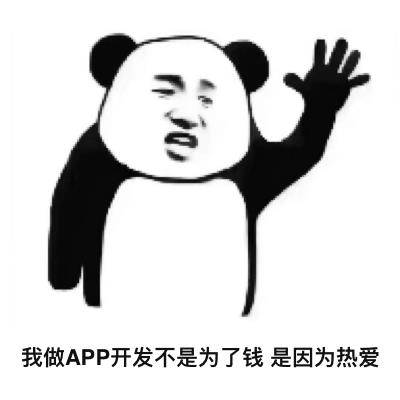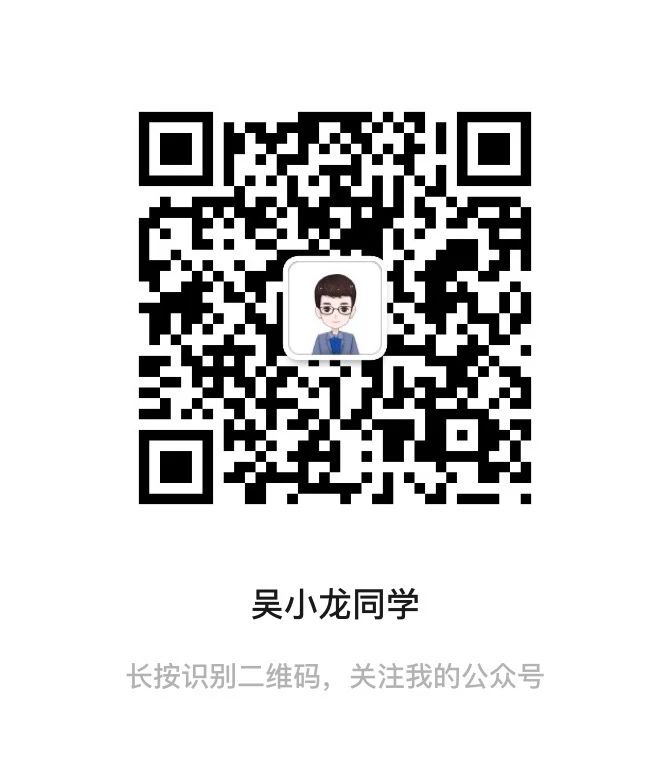Flutter 开发从 0 到 1框架与网络
Posted 吴小龙同學
tags:
篇首语:本文由小常识网(cha138.com)小编为大家整理,主要介绍了Flutter 开发从 0 到 1框架与网络相关的知识,希望对你有一定的参考价值。

框架
之前做 APP 开发的时候,我都是担任 android 组 leader,新项目起来,我会做技术预研,如《一套完整的 Android 通用框架》,一般会使用 MVP 模式(现在应该是 MVVM 模式),网络请求框架使用 Retrofit,图片加载使用 Glide,图片缩放和裁剪分别使用 PhotoView 和 uCrop 等,必要时,我会写个 sample 放项目里,让同事可以参考。

这个也是个新项目,我也需要做下技术预研,Flutter 网络请求框架需要使用什么?图片加载又使用什么?文章详情,我打算使用 Markdown,这 Flutter 能实现吗?等等,这些都是需要事前做好调研。
这个项目,代码版本管理用 GitHub,首先新建一个 Flutter 项目,GitHub 也新建个私有项目(暂时不公开吧),用如下命令将本地代码和远程 GitHub 关联起来。
echo "# andblog" >> README.md
git init
git add README.md
git commit -m "first commit"
git remote add origin https://github.com/WuXiaolong/andblog.git
git push -u origin master
关联 OK,后面修改,就直接使用 Android Studio 自带的 Git 来提交代码。
接下来来看看 Flutter 网络请求框架使用什么?怎么使用?
网络
数据来源
说到网络请求框架,首先要解决数据从何而来,我没有后端(其实我可以开发),没有服务器,怎么搞?莫急,都说本系列文章是从零开发 APP,且能一个人做一个项目,我自然有办法。
数据我使用的 Bmob,它可以创建你想要的表,支持 RestAPI,这可以为做 APP 省去后端开发成本,当然像 Bmob 提供这样的服务有很多,就不一一介绍,Bmob 如何使用,也不说了,官方有很详细的文档,你可以点击文章底部「阅读原文」注册个账号玩玩。
http
网络请求框架的数据有了,可以玩起来了。
以请求文章列表接口示例,先用 Postman 看下数据结构:
"results": [
"content": "文章内容测试1",
"cover": "http://pic1.win4000.com/wallpaper/2020-04-21/5e9e676001e20.jpg",
"createdAt": "2020-07-05 13:50:58",
"date": "2020.07.01",
"objectId": "ct7BGGGV",
"summary": "摘要1",
"title": "标题测试1",
"updatedAt": "2020-07-05 13:53:16"
,
"content": "文章内容测试2",
"cover": "http://pic1.win4000.com/wallpaper/2020-04-21/5e9e676001e20.jpg",
"createdAt": "2020-07-05 13:52:37",
"date": "2020.07.02",
"objectId": "3L42777G",
"summary": "摘要2",
"title": "标题测试2",
"updatedAt": "2020-07-05 13:53:10"
]
Flutter 提供了网络请求框架是 http,地址:https://pub.flutter-io.cn/packages/http
添加 http 包,在 pubspec.yaml 添加:
dependencies:
http: ^0.12.1
项目根目录执行命令flutter pub get安装软件包。
新建 blog_list_page.dart 用来展示文章列表,blog.dart 是文章列表的结构表,把入口 main.dart 直接加载文章列表,详细代码如下。
main.dart:
import 'package:flutter/material.dart';
import 'andblog/list/blog_list_page.dart';
void main()
runApp(MyApp());
class MyApp extends StatelessWidget
@override
Widget build(BuildContext context)
return MaterialApp(
title: 'AndBlog',
theme: ThemeData(
primarySwatch: Colors.blue,
visualDensity: VisualDensity.adaptivePlatformDensity,
),
home: new BlogListPage(),
);
blog_list_page.dart:
import 'package:flutter/material.dart';
import 'package:flutter_andblog/andblog/http/http_common.dart';
import 'package:http/http.dart' as http;
import 'blog.dart';
class BlogListPage extends StatefulWidget
@override
BlogListPageState createState() => new BlogListPageState();
class BlogListPageState extends State<BlogListPage>
List<Blog> blogList = [];
@override
void initState()
super.initState();
//一进页面就请求接口
getBlogListData();
//网络请求
getBlogListData() async
var response = await http.get(HttpCommon.blog_list_url, headers: HttpCommon.headers());
if (response.statusCode == 200)
// setState 相当于 runOnUiThread
setState(()
blogList = Blog.decodeData(response.body);
);
@override
Widget build(BuildContext context)
return Scaffold(
appBar: AppBar(
title: Text('AndBlog'),
),
body: Center(
child: Column(
mainAxisAlignment: MainAxisAlignment.center,
children: <Widget>[
Text(
'You have pushed the button this many times:',
),
],
),
),
floatingActionButton: FloatingActionButton(
tooltip: 'Increment',
child: Icon(Icons.add),
), // This trailing comma makes auto-formatting nicer for build methods.
);
把网络 url 都放在 HttpCommon,详细代码在 http_common.dart:
class HttpCommon
static var blog_list_url = 'https://api2.bmob.cn/1/classes/ArticleTable/';
static Map<String, String> headers()
//设置header
Map<String, String> headers = new Map();
headers["X-Bmob-Application-Id"] = "bmob Application-Id";
headers["X-Bmob-REST-API-Key"] = "bmob REST-API-Key";
headers["Content-Type"] = "application/json";
return headers;
网络请求数据解析放在 blog.dart:
import 'dart:convert';
class Blog
final String content;
final String cover;
final String date;
final String objectId;
final String summary;
final String title;
//构造函数
Blog(
this.content,
this.cover,
this.date,
this.objectId,
this.summary,
this.title,
);
static List<Blog> decodeData(String jsonData)
List<Blog> blogList = new List<Blog>();
var data = json.decode(jsonData);
var results = data['results'];
print('results='+results[0]['content']);
for (int i = 0; i < results.length; i++)
blogList.add(fromMap(results[i]));
return blogList;
static Blog fromMap(Map<String, dynamic> map)
return new Blog(
content: map['content'],
cover: map['cover'],
date: map['date'],
objectId: map['objectId'],
summary: map['summary'],
title: map['title'],
);
我习惯性打印print('results='+results[0]['content']);看看数据解析对不对,多次尝试最后打印文章内容测试1,达到了预期。
json_serializable
在写文章列表的结构 blog.dart 需要手动一个个敲字段,然后解析,Flutter 有没有像 GsonFormat 这样自动解析的插件,当然是有,是 json_serializable,使用 json_serializable,你需要一个常规依赖,以及两个 dev 依赖:
dependencies:
flutter:
sdk: flutter
json_annotation: ^3.0.1
dev_dependencies:
flutter_test:
sdk: flutter
build_runner: ^1.10.0
json_serializable: ^3.3.0
项目根目录执行命令flutter pub get安装软件包。
以文章详情结构体示例:
"content": "文章内容测试1",
"cover": "http://pic1.win4000.com/wallpaper/2020-04-21/5e9e676001e20.jpg",
"createdAt": "2020-07-05 13:50:58",
"date": "2020.07.01",
"objectId": "ct7BGGGV",
"summary": "摘要1",
"title": "标题测试1",
"updatedAt": "2020-07-05 13:53:16"
根据 json 创建实体类 detail.dart:
import 'package:json_annotation/json_annotation.dart';
//为了使实体类文件找到生成文件,需要 part 'detail.g.dart'
part 'detail.g.dart';
@JsonSerializable()
class Detail
final String content;
final String cover;
final String date;
final String objectId;
final String summary;
final String title;
//构造函数
Detail(
this.content,
this.cover,
this.date,
this.objectId,
this.summary,
this.title,
);
刚写完 detail.g.dart 会报错,这是正常的!因为我们还没生成解析文件。
接下来解析,项目根目录执行命令flutter packages pub run build_runner build
会发现生成一个 detail.g.dart 文件:
// GENERATED CODE - DO NOT MODIFY BY HAND
part of 'detail.dart';
// **************************************************************************
// JsonSerializableGenerator
// **************************************************************************
Detail _$DetailFromJson(Map<String, dynamic> json)
return Detail(
content: json['content'] as String,
cover: json['cover'] as String,
date: json['date'] as String,
objectId: json['objectId'] as String,
summary: json['summary'] as String,
title: json['title'] as String,
);
Map<String, dynamic> _$DetailToJson(Detail instance) => <String, dynamic>
'content': instance.content,
'cover': instance.cover,
'date': instance.date,
'objectId': instance.objectId,
'summary': instance.summary,
'title': instance.title,
;
然后把这两个方法放到 detail.dart:
factory Detail.fromJson(Map<String, dynamic> json) => _$DetailFromJson(json);
Map<String, dynamic> toJson() => _$DetailToJson(this);
接下来就可以调用 fromJson 方法解析网络请求的数据:
var data = json.decode(response.body);
detail = Detail.fromJson(data);
print('results='+detail.title);
这样看下来,使用 json_serializable 并没有方便多少,只是把解析字段省了,最烦没有把添加字段步骤自动化,比 GsonFormat 弱爆了。

以上是关于Flutter 开发从 0 到 1框架与网络的主要内容,如果未能解决你的问题,请参考以下文章